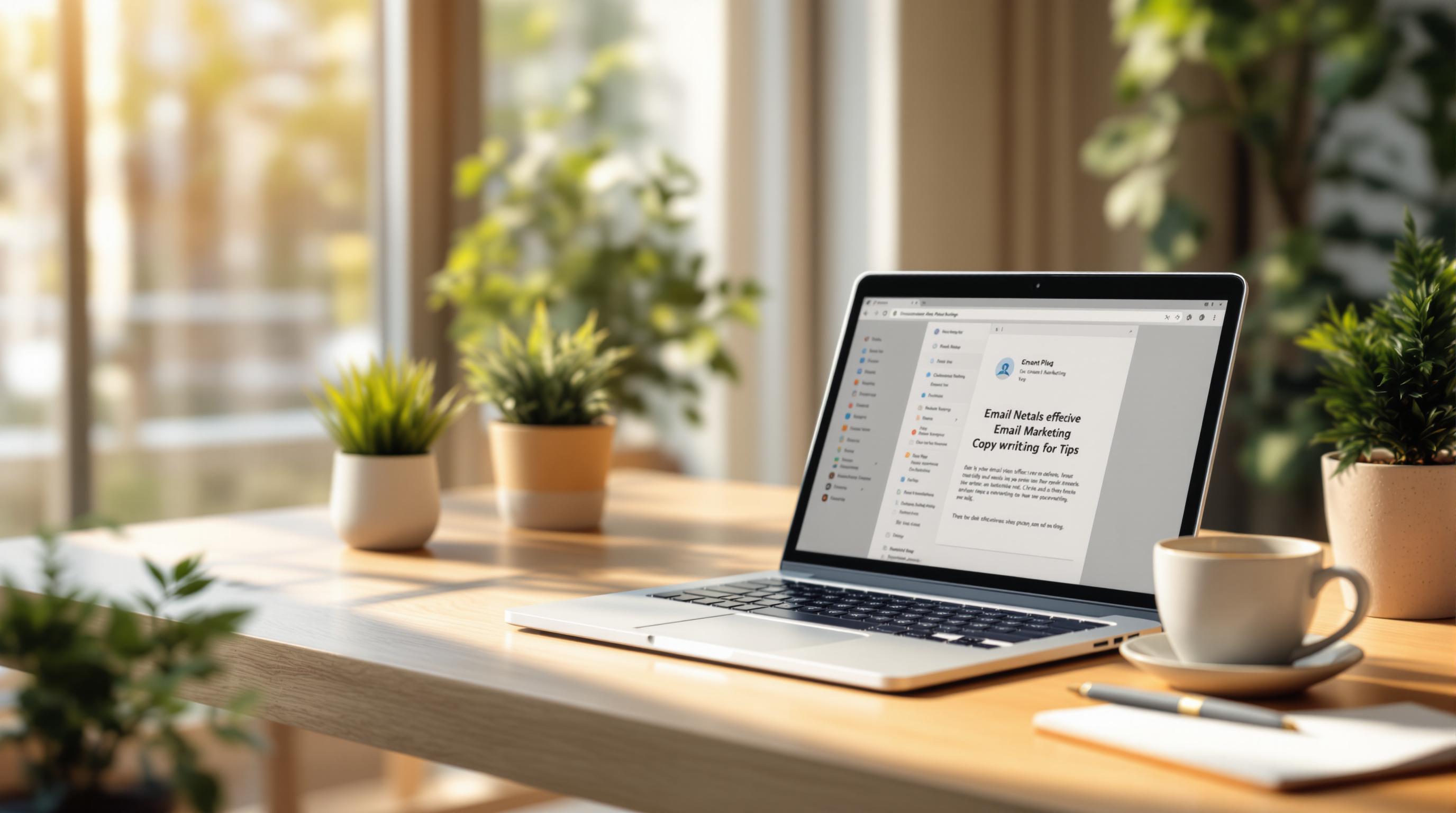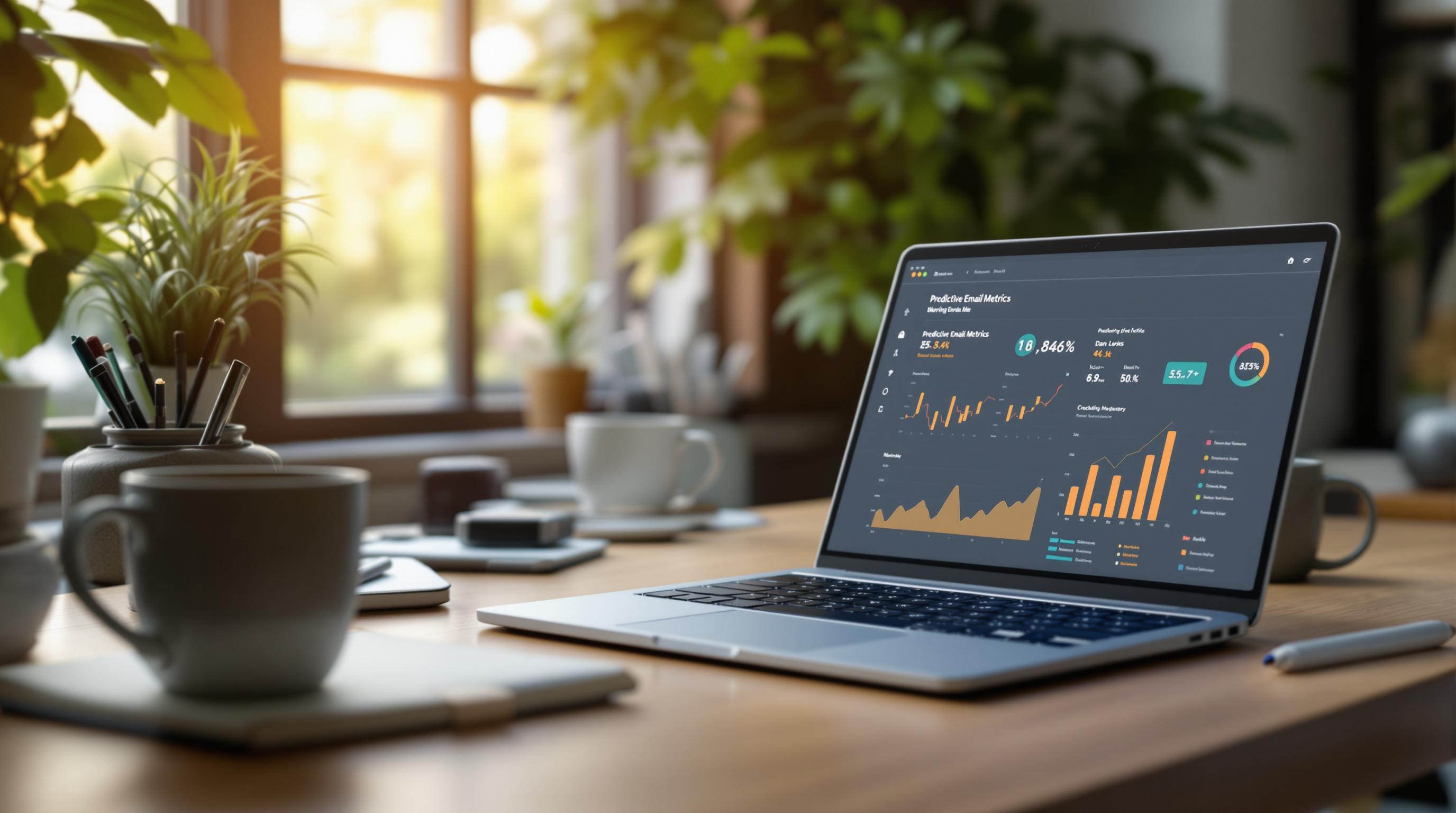Post-purchase email sequences are automated emails sent after a customer makes a purchase. They improve customer experience, build loyalty, and encourage repeat sales. Here's what you need to know:
- Why They Matter: These emails have high open rates (40.5%) and drive engagement by providing order updates, product tips, and personalized recommendations.
- Types of Emails: Includes order confirmations, shipping updates, thank-you notes, product guides, review requests, and cross-sell suggestions.
- Key Benefits: Keep customers informed, offer helpful advice, gather feedback, and suggest complementary products.
- How to Succeed:
- Use segmentation (e.g., by purchase history or product type) for personalized emails.
- Focus on clear, valuable content with mobile-friendly designs.
- Send emails at the right time, like immediately for order confirmations or 7–12 days after delivery for reviews.
Quick Tip: Regularly test email performance (subject lines, CTAs) and track metrics like open rates (20–25%) and conversion rates (1–2%).
Keep reading for actionable strategies, timing guidelines, and tools to create effective email sequences that boost customer retention.
Important Post Purchase Email Sequences You Must Have
Definition and Purpose of Post-Purchase Email Sequences
Post-purchase email sequences are a series of automated messages sent after a customer makes a purchase. Their goal is to improve the customer experience, build loyalty, and keep the communication going after the transaction.
Types of Post-Purchase Emails
There are several types of post-purchase emails, each serving a specific purpose to enhance the customer's journey:
| Email Type | Purpose | Timing |
|---|---|---|
| Order Confirmation | Confirms the purchase and shares a receipt | Immediately after purchase |
| Shipping Updates | Keeps customers informed about delivery progress | Throughout the shipping process |
| Thank You Email | Expresses gratitude for the purchase | 1-2 days after purchase |
| Product Usage Guide | Provides tips or instructions for using the product | When the product is delivered |
| Review Request | Asks for feedback or reviews | 5-7 days after delivery |
| Product Recommendations | Suggests complementary items | 1-2 weeks after purchase |
| Win-back Campaign | Reconnects with inactive customers | 30+ days after purchase |
Benefits of Post-Purchase Email Sequences
These email sequences offer advantages for both businesses and customers. For businesses, they help retain customers, gather feedback, and highlight related products based on previous purchases.
For customers, these emails provide:
- Timely updates about their orders and shipping status
- Helpful tips for using or setting up their products
- Personalized suggestions for additional items they might like
- Opportunities to share feedback that can shape future offerings
By keeping customers informed and engaged, these emails help reduce uncertainty after a purchase and build trust. For example, clear shipping updates can ease concerns about delivery times, while a well-timed thank-you note or product guide can leave a positive impression.
Now that you know the types and benefits of these emails, the next step is creating sequences that truly connect with your audience.
Steps to Create Effective Post-Purchase Email Sequences
The goal of post-purchase emails is to keep customers engaged and provide ongoing value after their purchase.
Segmentation Techniques
| Segmentation Criteria | How It's Used |
|---|---|
| Purchase History | Offer tailored recommendations (e.g., first-time vs. repeat buyers). |
| Product Category | Provide relevant content, like usage tips for specific product types. |
| Purchase Value | Offer exclusive perks for high-spending customers. |
| Purchase Frequency | Adjust timing for regular vs. occasional shoppers. |
Personalized emails see 22% higher open rates compared to generic ones [3]. By segmenting your audience, you can send emails that feel more relevant and impactful.
Email Content and Design Tips
Your email content should be practical, engaging, and easy to navigate.
- Focus on Value: Include product-specific tips or guides to help customers make the most of their purchase.
- Clean Design: Use mobile-friendly layouts, clear calls-to-action (CTAs), and well-balanced visuals to make emails easy to read.
- Personalization: Reference the customer’s purchase or browsing history to make the email feel tailored. For instance, Everlane excels at creating a sense of community by asking for personalized feedback [4].
Timing and Frequency Guidelines
| Email Type | When to Send & Why |
|---|---|
| Order Confirmation | Immediately to confirm the transaction. |
| Shipping Updates | Send updates as the order status changes. |
| Product Usage Guide | Upon delivery to help the customer get started. |
| Review Request | 7-12 days after delivery to collect feedback. |
| Cross-sell Suggestions | 2-3 weeks later to encourage additional purchases. |
Use customer engagement data to adjust the timing of your emails. Once these sequences are set, you can focus on improving their performance through testing and analysis.
sbb-itb-6e7333f
Improving Post-Purchase Email Performance
Creating effective post-purchase email sequences requires ongoing tweaks and analysis. Here’s how you can boost your email performance with testing, tracking, and ensuring compliance.
A/B Testing for Better Results
Experimenting with different elements of your emails can reveal what works best. Focus on testing one thing at a time to get clear insights:
| Element to Test | What to Evaluate | Potential Impact |
|---|---|---|
| Subject Lines | Open rates and timing | 25-35% boost in open rates |
| Email Copy | Click-through rates | 15-25% increase in clicks |
| CTAs | Conversions and placement | 10-20% rise in conversions |
| Visuals | Engagement and mobile compatibility | 5-15% higher engagement |
Once you’ve nailed down what resonates with your audience, keep refining based on performance data.
Metrics That Matter
To measure success, keep an eye on these key metrics:
| Metric | Benchmark | Why It’s Important |
|---|---|---|
| Open Rate | 20-25% | Reflects how appealing your subject lines are |
| Click-Through Rate | 2.5-3% | Indicates the relevance of your content |
| Conversion Rate | 1-2% | Shows the impact on revenue |
| Unsubscribe Rate | < 0.5% | Helps balance email frequency and content |
Tracking these figures not only highlights what’s working but also helps maintain compliance by ensuring strong engagement.
Staying Compliant and Improving Deliverability
Good deliverability is critical for getting your emails seen. Here are some ways to stay compliant and improve inbox placement:
- Authentication Protocols: Use SPF, DKIM, and DMARC to verify your domain and avoid spam filters.
- Clean Your List: Regularly remove invalid or inactive addresses. Attempt to re-engage inactive subscribers before cutting them.
- Respect Permissions: Make unsubscribing easy with clear links, and process opt-outs within 10 days as required by CAN-SPAM guidelines [5].
"The key to high deliverability is maintaining a clean email list and respecting subscriber preferences. Regular list cleaning can improve delivery rates by up to 15% and increase engagement metrics across the board." [3]
To further improve deliverability:
- Use double opt-in for new subscribers.
- Stick to consistent sending schedules.
- Monitor bounce rates and address issues promptly.
Even a small improvement - like a 5% jump in inbox placement - can make a noticeable difference in your campaign’s success.
Tools and Resources for Post-Purchase Email Management
Choosing the right tools can make all the difference when managing post-purchase email sequences. Here’s a look at some resources and platforms that can help simplify your email marketing strategy.
Email Service Business Directory
The Email Service Business Directory is a helpful resource for finding email marketing tools tailored to post-purchase campaigns. It allows businesses to compare platforms based on features like automation, segmentation, and analytics, helping you find the best match for your customer retention and engagement goals.
Understanding what each tool offers can help you zero in on the one that aligns with your specific needs.
Popular Email Marketing Platforms
Different platforms bring unique strengths to post-purchase email management. Here’s a quick comparison:
| Platform | Strengths | Ideal For |
|---|---|---|
| Klaviyo | Advanced segmentation and predictive tools | Mid to large online retailers |
| Mailchimp | Easy-to-use with strong automation features | Small to medium businesses |
| Drip | Behavior-based automation and revenue tracking | Growing e-commerce brands |
When choosing a platform, keep these factors in mind:
- Integration: Ensure it works smoothly with your e-commerce system.
- Automation: Look for features that support triggered email sequences.
- Segmentation: Personalization is key for customer journeys.
- Analytics: Track performance to understand what’s working.
- Scalability: Pick a platform that can grow with your business.
With the right tools, you can create post-purchase emails that build stronger customer connections and encourage repeat purchases.
Conclusion
Post-purchase email sequences are a highly effective way to strengthen customer relationships and support business growth. With average open rates of 40.5%, these emails provide a key opportunity to connect with customers when they're most engaged.
To make the most of these campaigns, businesses should focus on three main areas:
1. Strategic Planning
- Group customers by purchase habits and preferences.
- Match emails to important stages in the customer journey.
- Send emails at the right time for the best results.
2. Content Optimization
- Share tailored product recommendations.
- Provide content that solves customer problems or answers questions.
- Use clear, actionable language.
3. Technical Implementation
- Test and tweak email performance regularly.
- Track important metrics to measure success.
- Follow best practices to ensure emails reach inboxes.
Email marketing is always changing, so using the right tools is essential. The Email Service Business Directory is a helpful resource for finding platforms that suit your goals, whether it's retention, automation, or in-depth analytics.
Keep improving your email sequences by analyzing customer feedback and performance data. When done right, these campaigns can go beyond short-term goals to build lasting loyalty. For example, brands like Everlane have shown how thoughtful strategies can turn post-purchase emails into a powerful way to nurture customer connections [4].
FAQs
What are the statistics of post-purchase emails?
Post-purchase emails bring impressive results for e-commerce businesses. They typically see 46.1% open rates, 16.7% click-through rates, and 5.0% conversion rates.
| Metric | Performance |
|---|---|
| Average Open Rate | 46.1% |
| Click-through Rate | 16.7% |
| Conversion Rate | 5.0% |
Brands like Allbirds and Ten Thousand have seen better engagement and more repeat purchases by using personalized content and well-timed messages [2].
Here’s how to time your post-purchase emails for the best results:
- Review requests: 7–12 days after delivery
- Replenishment reminders: 2–3 weeks after purchase
- Order confirmations: Send immediately
"Post-purchase follow-ups tend to be some of the most lucrative email campaigns that marketers can employ, and studies consistently affirm that fact." [1]
These numbers highlight how segmentation, personalization, and timing play a key role in making post-purchase emails successful. By applying these strategies and benchmarks, businesses can fine-tune their campaigns for better outcomes, as discussed throughout this guide.


